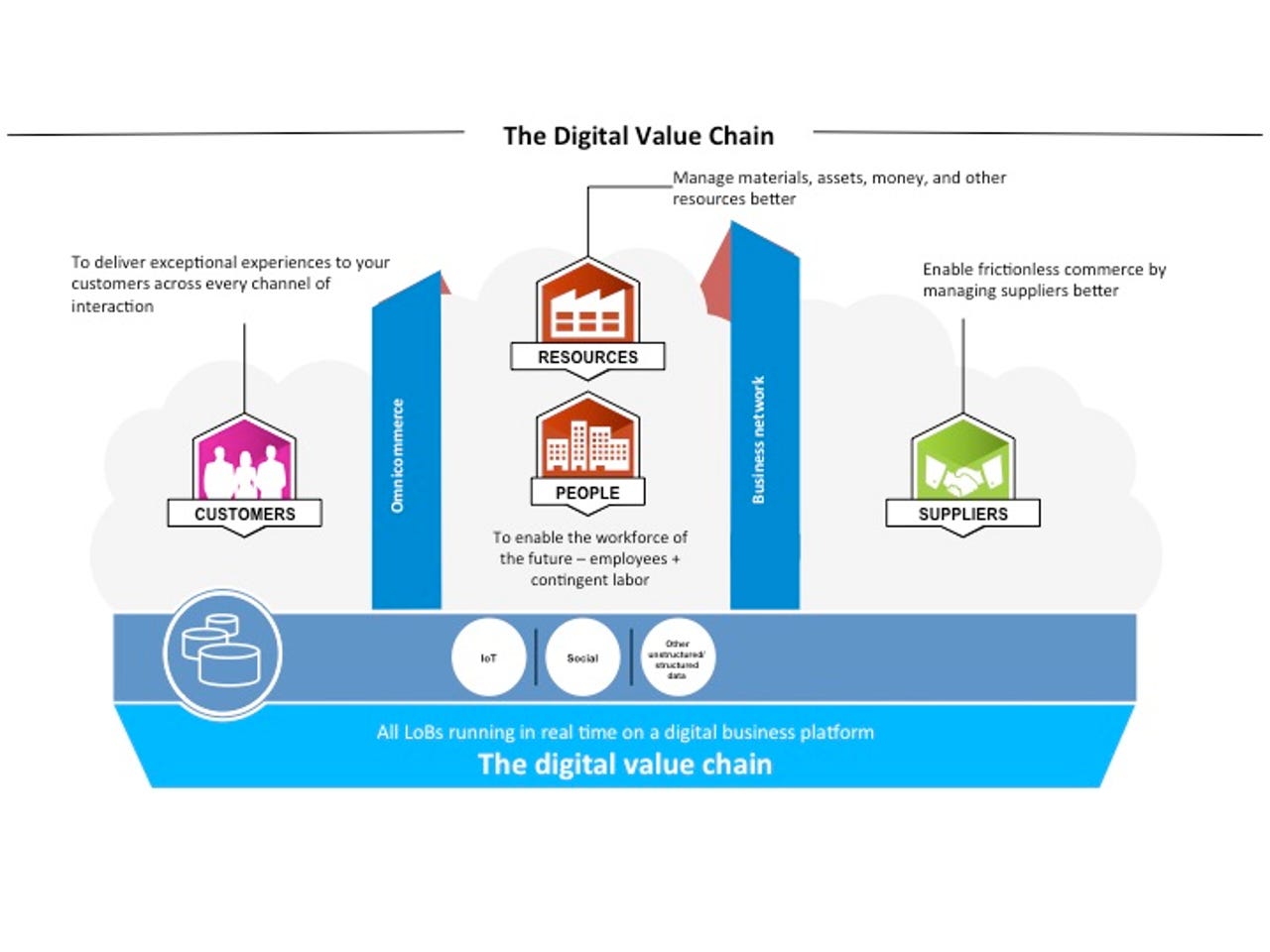Part 2: Introducing a Digital Business Platform
As we wrote in our blog Enable Your Digital Value Chain, the future of business in the digital information age is now. So it's time to think about how we can introduce a Digital Business platform.
Over the years, growth in transactional databases and other data sources -- as well as their associated systems -- has complicated enterprise applications and infrastructure. This, in turn, has complicated and stymied many organizations' ability to meet the needs of business units, whether in terms of timely access to analytics, the ability to absorb new business models, or to create new, streamlined business processes.
In response, you need to rewrite and simplify the applications to take advantage of a unique in-memory business platform. This removes previous technological barriers and helps companies reduce complexity and run simpler across the digital value chain.
In a nutshell, it enables three things:
Reimagine business
With the enterprise running in real time and big data at the core, new business models can easily be configured and opportunities to grow revenue and market share can be realized.
Reimagine IT
The IT landscape is dramatically simplified by the consolidation of transactional and analytical data into one, common in-memory structure. The application code is streamlined to leverage real-time processing. TCO is reduced and performance is improved.
Reimagine user experience
People-centric interfaces simplify the user experience. Business users can interact in real time and access all data, of all types, on any device.
With this new framework in place, enterprises can envision the possibilities afforded by a real-time, digital, simplified, and modern business platform. The following strategic areas articulate the business and IT capabilities that are enabled as a result of the digitization of the value chain:

Innovate for the future
By 2020, there will be as many as 50 billion devices connected to the Internet. Research also shows that there is over $14.4 trillion at stake from a combination of increased revenues and lower costs for organizations that harness the Internet of Things.
Fundamentally, you need to enable all assets, structured and unstructured data, and business processes across the digital value chain to be connected through a common digital business platform.This will enable the organization to explore new business models never before imagined.
Stay tuned for a series on use cases that show the value of this unique approach.
Looking forward to your feedback and stay tuned for more. Meanwhile follow me via @SDenecken